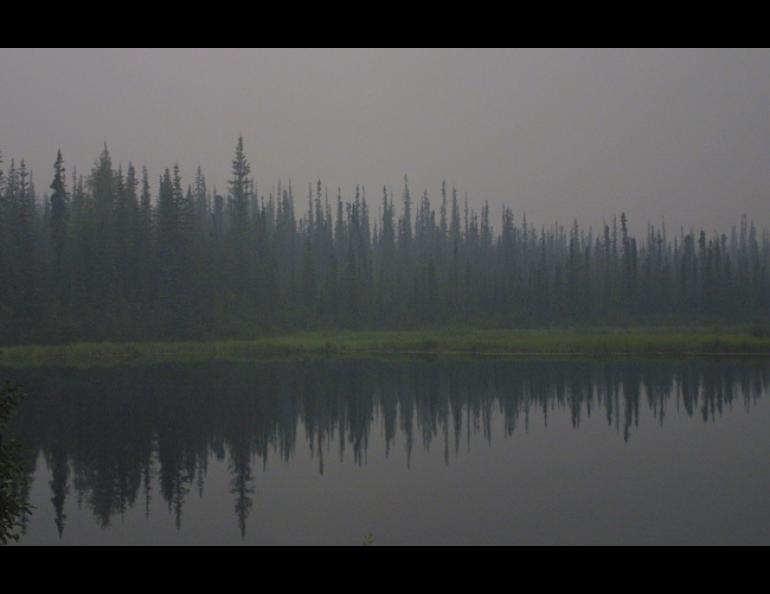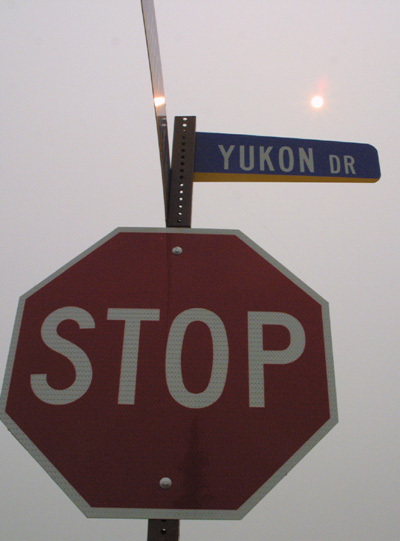

The smoking of Interior Alaska
In late June 2004, Fairbanks was a lot like Beijing.
Smoke from wildfires had rolled into town, plugging air-monitoring gauges with small particles so dense that the Fairbanks air registered above levels in Mexico City and Beijing, two of the cities with the worst air on Earth.
For the record, Fairbanks’ air measured more than 1,000 micrograms of particles per cubic meter on sensors maintained by the Fairbanks North Star Borough on the roof of the state office building downtown.
“E.P.A.’s calculation for air quality says air is hazardous at 300 (micrograms per cubic meter), we’ve had more than three times that much,” said Jim Conner, air quality specialist for the borough.
Fairbanks also came very close to violating a federal standard for carbon monoxide in the city, Conner said. An instrument that records levels of the toxic, odorless gas registered 9.2 parts per million of CO in downtown Fairbanks; 9.5 is a violation of the Clean Air Act, and midsummer readings in Fairbanks are typically about 2 or 3 parts per million.
“We’ve never seen this in the summer,” Conner said. “At least not in the last 10 years.”
The smoke in Fairbanks that set off smoke alarms and grounded small aircraft was from a forest fire west of the Steese Highway that had been burning for weeks. It covered Fairbanks when winds carried much of it into town.
With Fairbanks awash in smoke, Cathy Cahill and other atmospheric scientists took the opportunity to study their favorite subject—air. Cahill, an atmospheric chemist at the University of Alaska’s Geophysical Institute, said most of the smoke in Fairbanks was the remnants of “good ol’ fashioned black spruce.” In her lab at UAF, she prepared an air sampler for installation later that day in a Fairbanks home. She and Bill Reynolds, an indoor air quality consultant, wanted to compare particulate levels both inside and outside the downtown house to see which air was better to breathe. They will later compare the results with the borough instruments nearby and recommend a filtration system for a house of comparable size.
Reynolds recommended that homes use air that passes through carbon filters for reduction of forest fire smoke. For the many homes in Fairbanks without filter systems, he said that residents “need to shut windows and doors and wait” for the smoke to clear. According to the EPA, inhaling smoke particles for a long period of time can result in ailments ranging from asthma to death, but Fairbanks, as murky as it was, had the advantage of eventually clearing with fresh wind or a heavy rainfall.
Polluted cities have a more complicated road to clean air.
“Beijing, on its bad days, is far worse than we are right now,” Cahill said as Fairbanks was blanketed in smoke. Instead of black spruce particles, people in Beijing inhale specks from coal-fired power plants and metal smelting plants, along with auto exhaust and desert dust, she said.
Even with the smoky days averaged in, Alaska air is some of the cleanest measured. An air sensor at Denali National Park always registers the clearest of any in the National Park system, with a yearly average of about 1.5 micrograms of particles per cubic meter of air, which is squeaky clean compared to Fairbanks’ recent reading of greater than 1,000 and Beijing’s average of 364 for every day during 1996.






